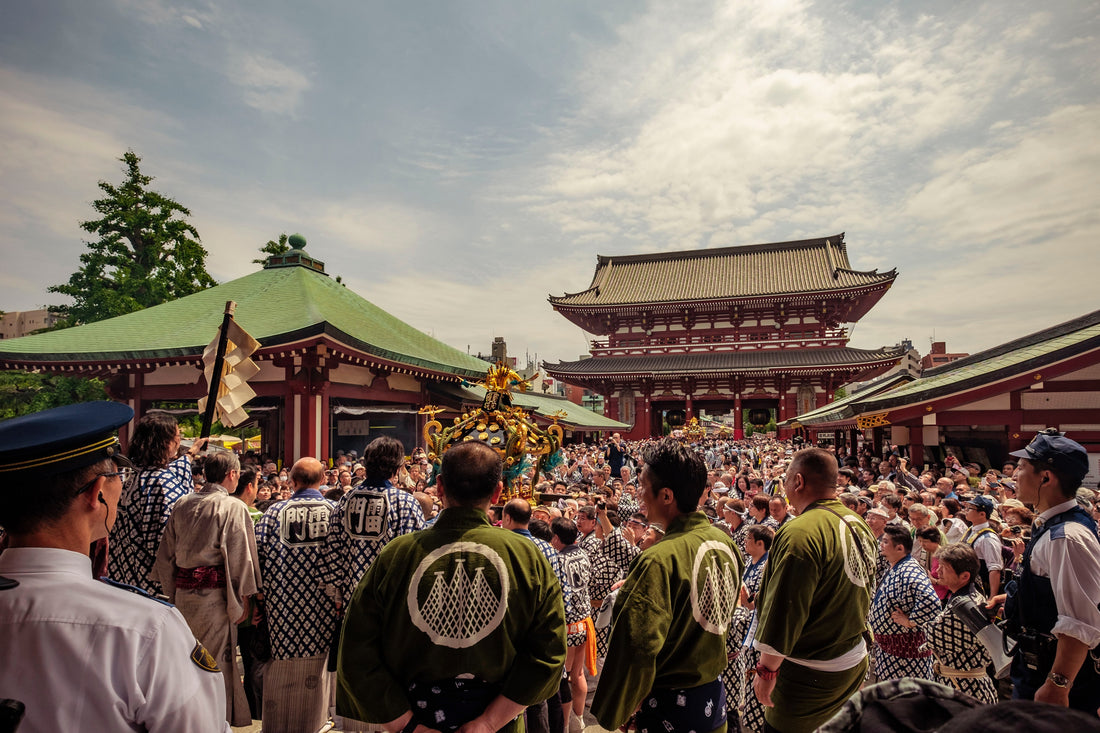What is Sanja Matsuri?
Annually, during the 3rd weekend of May, Tokyo becomes host to one of the largest festivals the Japanese capital city puts on: Sanja Matsuri (三社祭), or the Sanja Festival. The celebration takes place in the city’s Asakusa district, known for its plentiful historical structures and monuments, particularly the Sensō-ji temple. The temple was built in the 6th century AD, making it the oldest temple in Tokyo. The Buddhist temple and its three founders are the subject of the festivities that take place over the 3-day weekend.
Like most Japanese festivals, Sanja Matsuri is a religiously based celebration. Approximately 70% of Japan’s population is part of, or at least adheres to, the Shinto religion’s beliefs and practices. Sanja Matsuri is one of (and often considered the largest of) 3 Shinto Tokyo festivals. At first, it may seem a bit confusing as to why the temple celebrated in this festival is Buddhist, yet it is considered a Shinto event rather than a Buddhist one. This is because the histories of Shintoism and Buddhism in Japan are intertwined. Once Buddhism spread to Japan from China in the 6th century, it and Shintoism shared and traded some religious concepts with each other. Consequently, some temples became significant to both religions.

How is it celebrated?
Despite its religious origins, Sanja Matsuri is known as a lively and energetic event featuring lots of street performers, music, games, food, drink, and more. Approximately 2 million natives and tourists flood the streets of Asakusa to partake in the lively event each year. The festival’s most iconic tradition is the parading of mikoshi (神輿) on the last day of the event. These miniature shrines are meant to replicate the temple and symbolically house the spirit (kami) of deities. There are three large, heavy, and opulently decorated mikoshi, which belong to the Sensō-ji temple, and are the main attraction of the festival. The three mikoshi represent each of the temple’s founders. There are dozens of smaller, lightweight mikoshi that are paraded and placed around the festival grounds as well. The procession of these symbolic objects is thought to bring luck to the local community and businesses in addition to honoring the history of the shrine.

It goes without explaining that it’s a little hard to celebrate a festival that occurs half the world away for most of us, but that doesn’t mean it’s impossible! Our fine selection of Japanese tableware contains plenty of items for you to replicate your own Sanja Matsuri inspired feast, or, discover more about Japanese culture by learning about the traditional Japanese sleep system: the shikifuton. Here at J-Life, we have plenty of products and educational blogs to provide everything you need and want to know about the unique culture of Japan.

